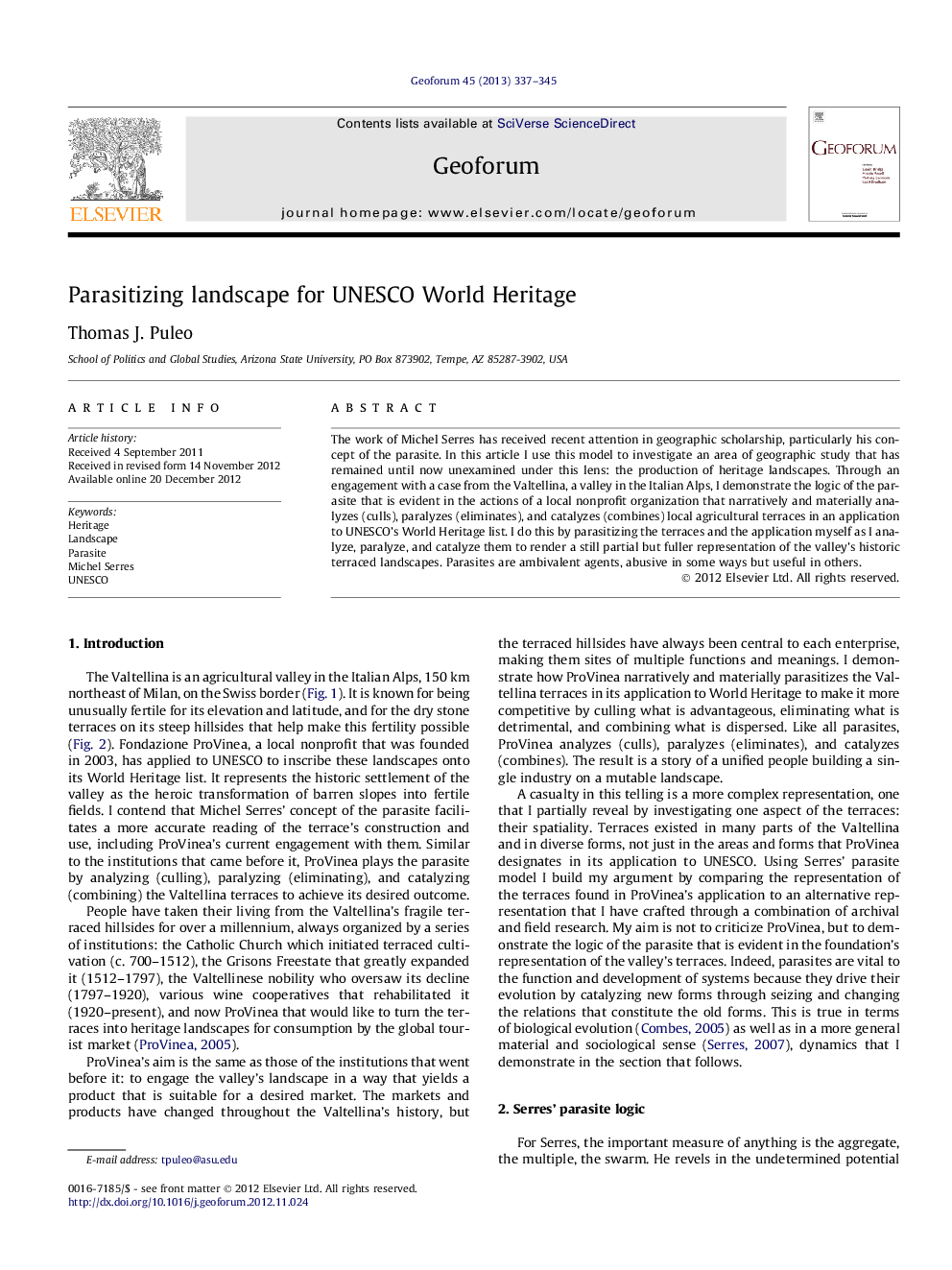| Article ID | Journal | Published Year | Pages | File Type |
|---|---|---|---|---|
| 5074176 | Geoforum | 2013 | 9 Pages |
The work of Michel Serres has received recent attention in geographic scholarship, particularly his concept of the parasite. In this article I use this model to investigate an area of geographic study that has remained until now unexamined under this lens: the production of heritage landscapes. Through an engagement with a case from the Valtellina, a valley in the Italian Alps, I demonstrate the logic of the parasite that is evident in the actions of a local nonprofit organization that narratively and materially analyzes (culls), paralyzes (eliminates), and catalyzes (combines) local agricultural terraces in an application to UNESCO's World Heritage list. I do this by parasitizing the terraces and the application myself as I analyze, paralyze, and catalyze them to render a still partial but fuller representation of the valley's historic terraced landscapes. Parasites are ambivalent agents, abusive in some ways but useful in others.
⺠I use Michel Serres' parasite model to investigate heritage landscapes. ⺠Parasites analyze, paralyze and catalyze landscapes to produce new forms. ⺠A local nonprofit, parasitizes the terraces of the Valtellina, a valley in the Italian Alps. ⺠It does this to enhance its efforts to place the terraces on the Unesco World Heritage list. ⺠Its parasitizing of the terraces results in a partial but also useful representation of them..
